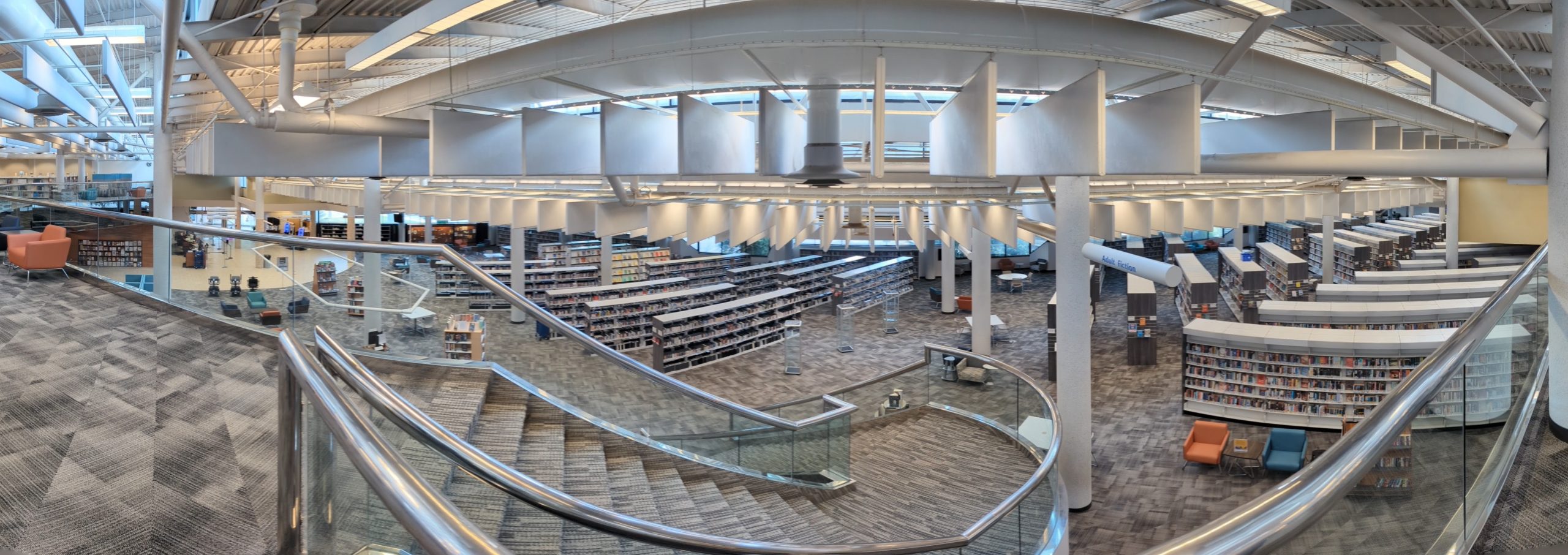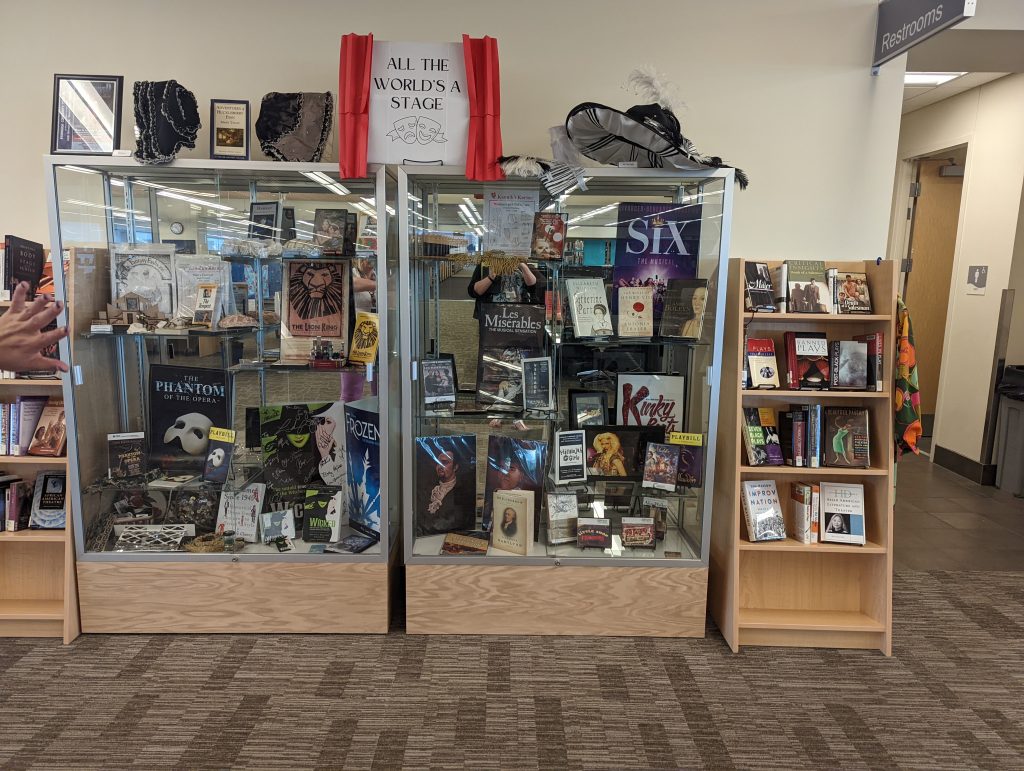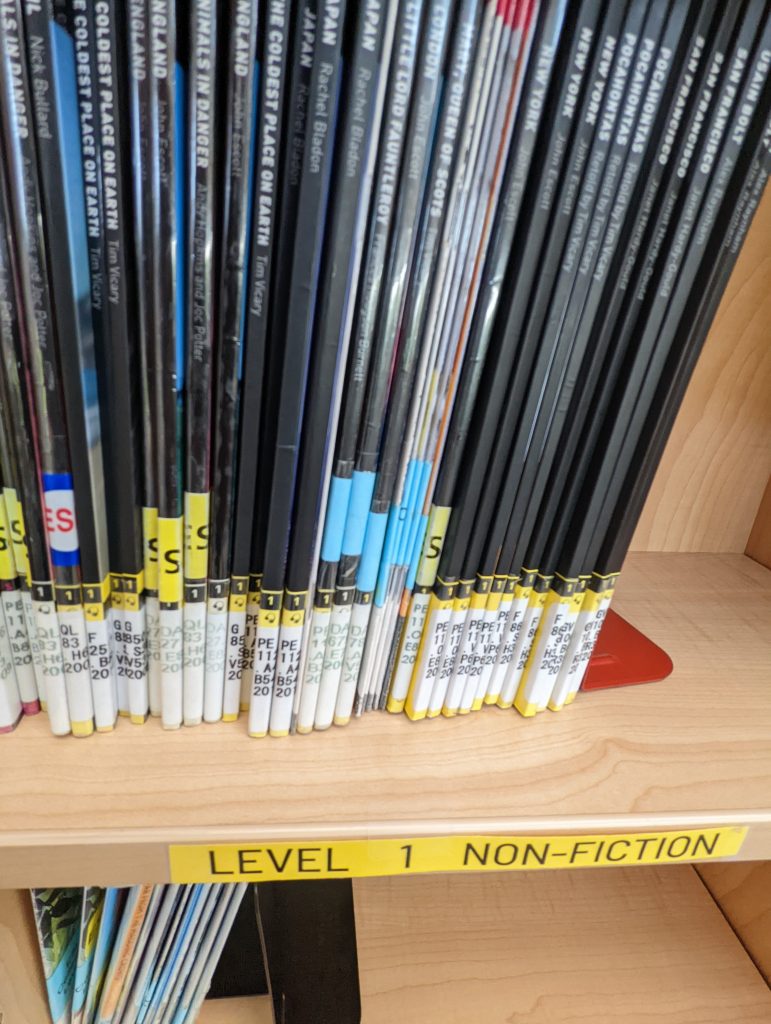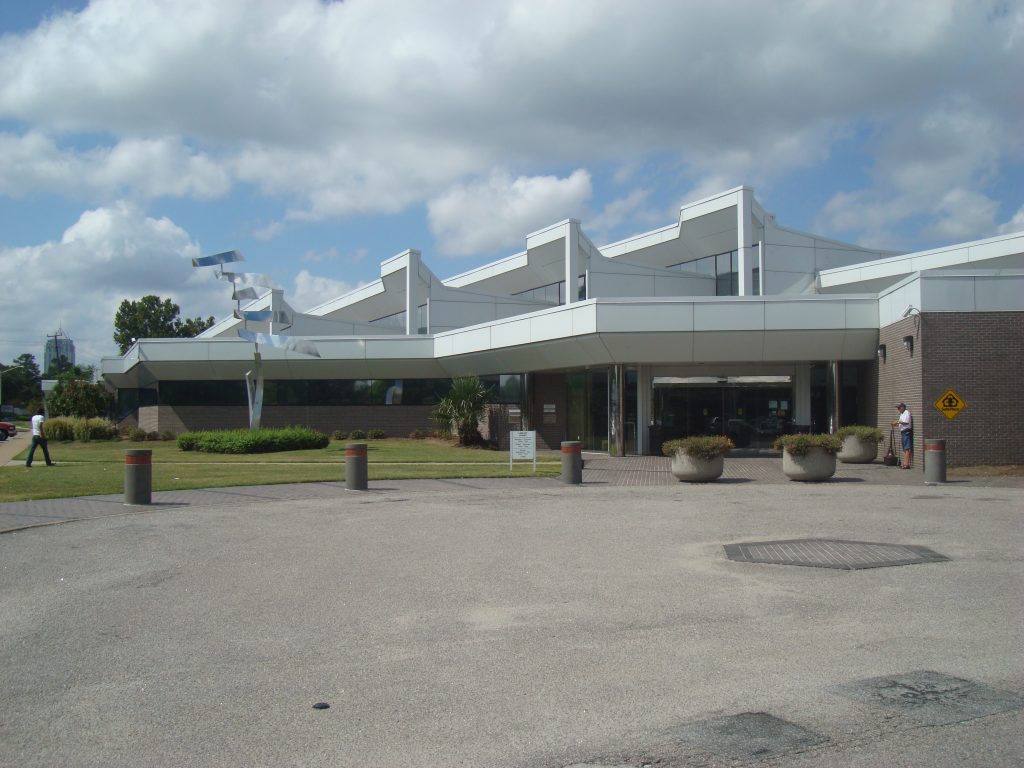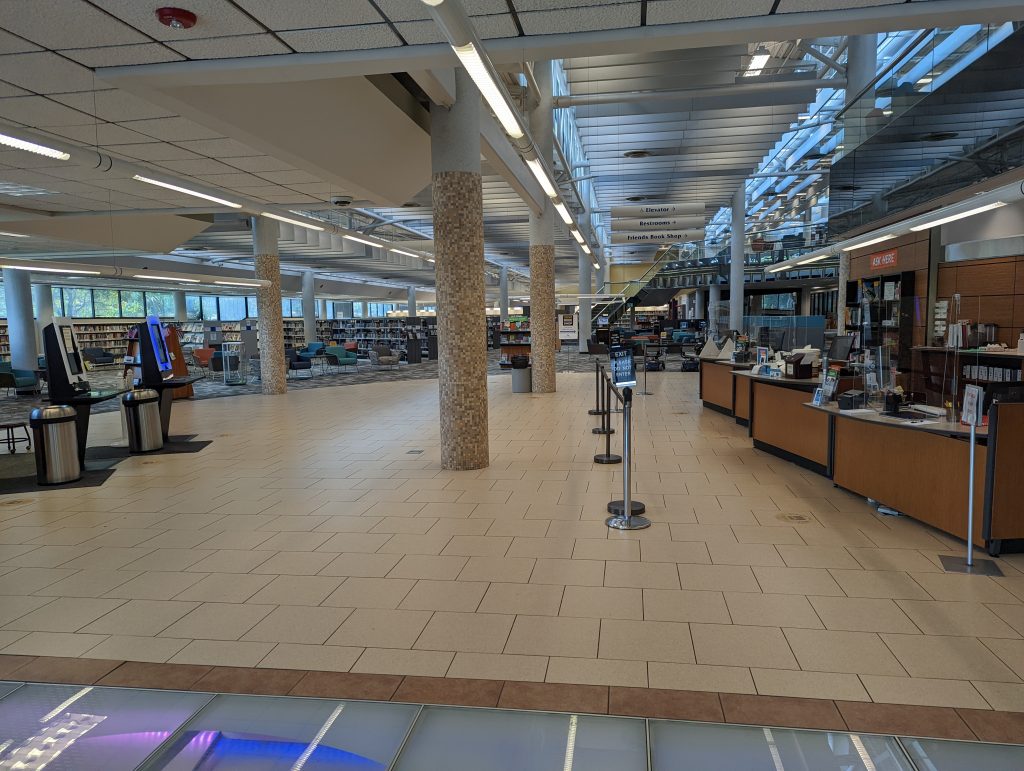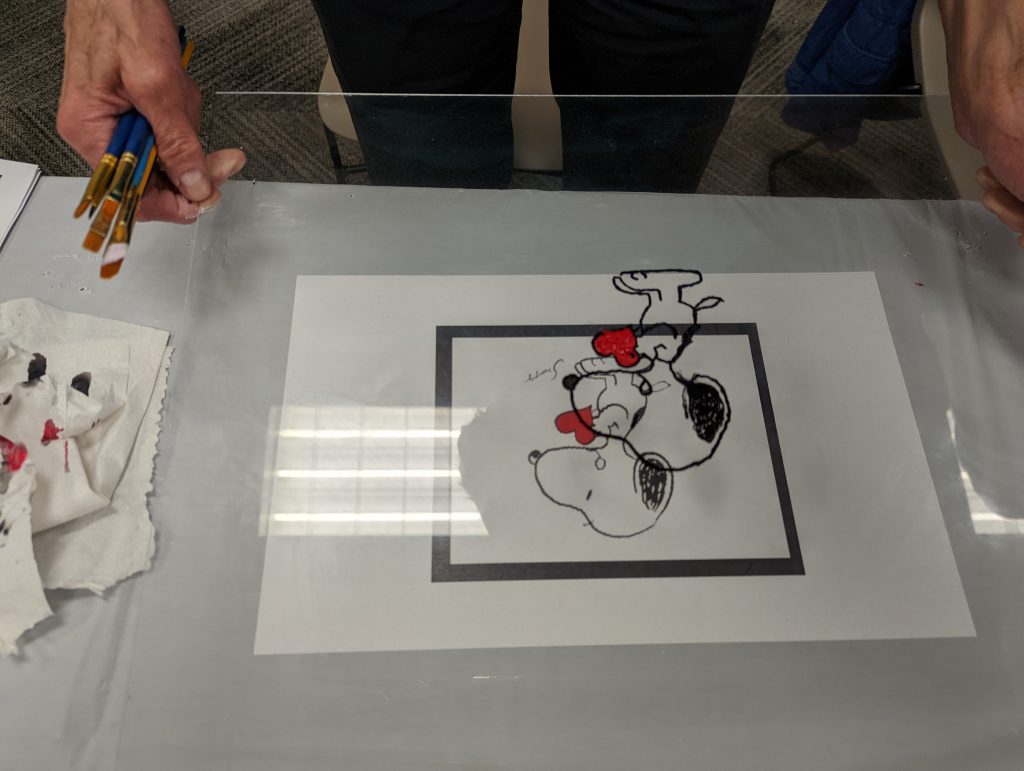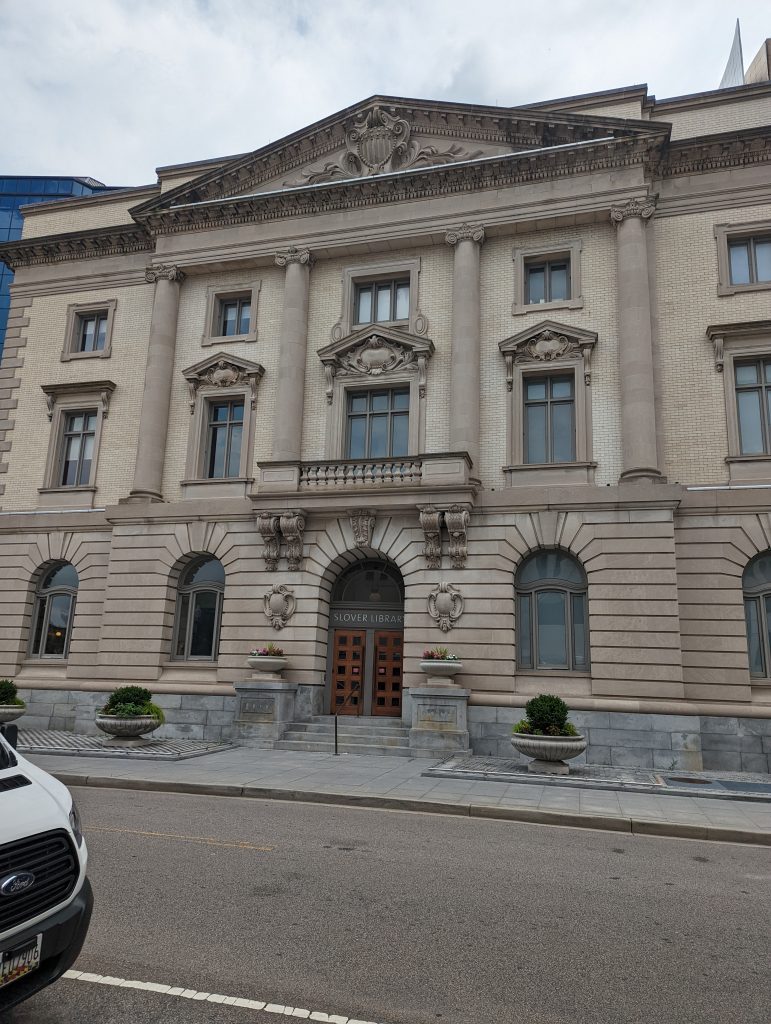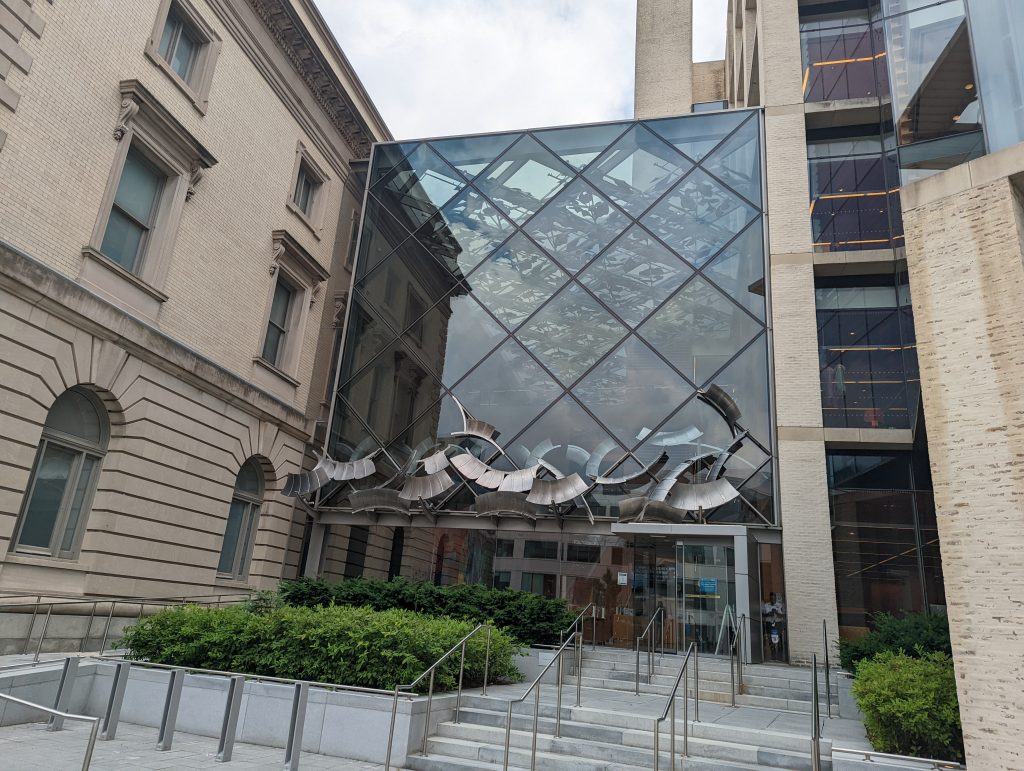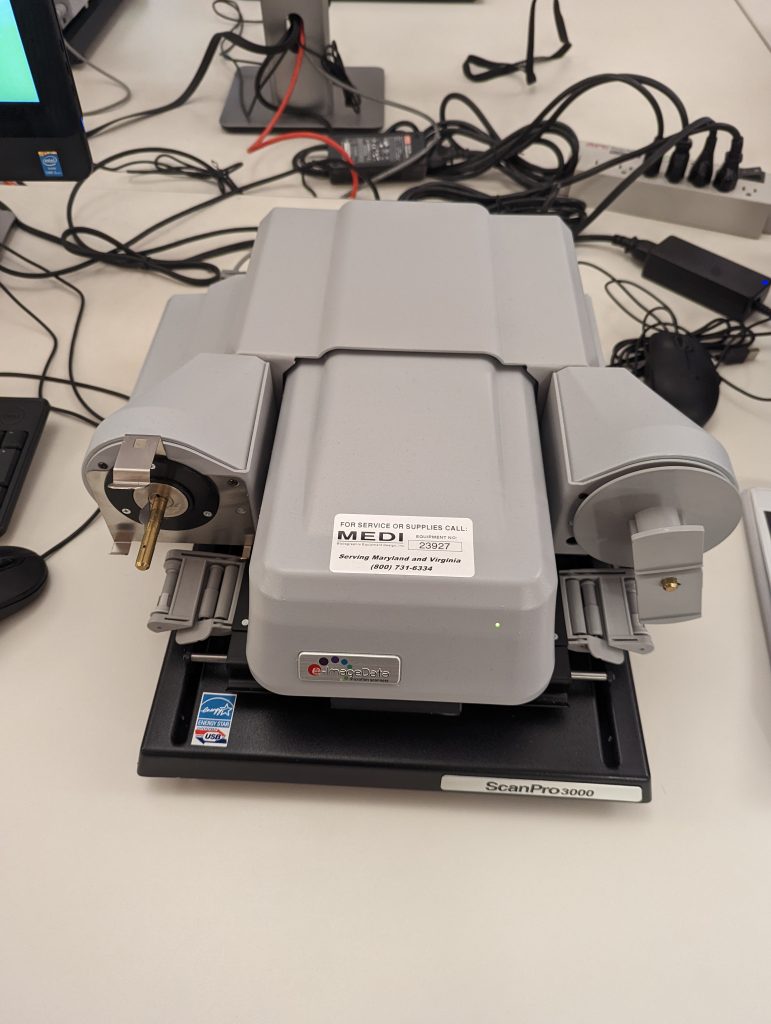The Space and Physical Access

Gildersleeve Middle School is a large, modern-looking school building situated in Newport News not far from the Christopher Newport University campus. It’s tucked away at the end of a long tree lined drive and is surrounded by wood giving the school an isolated feeling. The library itself is located on the second floor right by the elevator and at the top of the stairs by the entrance so it is both easy to find and accessible. Upon entering it immediately looks and feels like a school library. It does show a bit of wear but it is very cozy and has plenty of seating and tons of books that line sturdy wooden shelving. Most of the shelving is lower than expected to accommodate the height of a middle schooler, but one of the best features of the physical space is that several rooms with different purposes extend off of the library placing the library at the center of what essentially feels like a learning commons. There’s an AV room, a makerspace, and some offices tucked between the shelves that line the walls. The book return and main desk are the first things you see upon entering and the librarian’s office is right behind it and visible so even if the librarian is in her office, you can still see her and get her attention.
Customers, Collections, and Services
Most of the students that come into the library come as part of a class where they are given time to browse and pick out books or they can come with a pass issued by the teacher as well. Due to the pandemic, all students and staff coming into the library are required to sanitize their hands before handling the materials. During summer when I visited, the library would typically have 2-3 instruction periods per day though it varies, but during the school year it is more consistent. There are spaces for students to sit and read or do homework during the day, but there are no after school hours so the library closes with the school. Essentially, students are mostly coming in with classes for instruction or they are coming in to grab books and go. The librarian and others are working to establish the makerspace and they already have a lot of technology such as 3D printers, Ozobots, Spheros, and tons of crafting and maker supplies in the area that will at some point be made available for students.
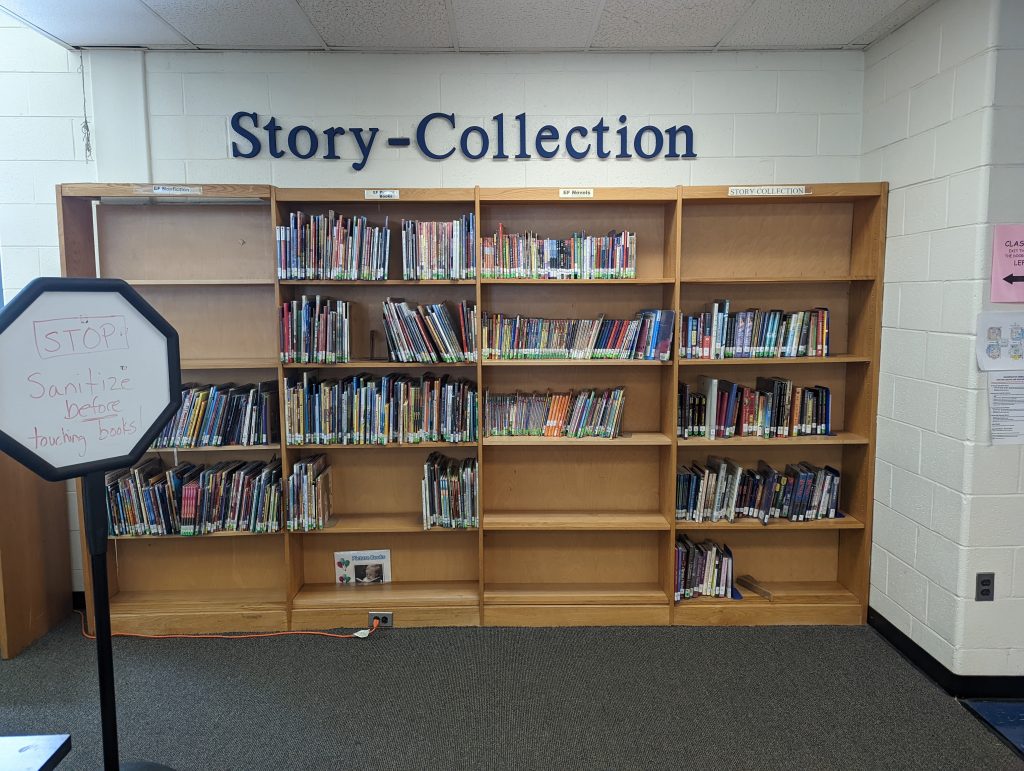
Like many school libraries, the rest of the collection is organized using the Dewey Decimal system and is split into fiction, nonfiction, and encyclopedias. One unique part of the collection was the stories collection which separates out all of the books containing anthologies compiled by multiple authors (such as short story collections) and puts them in one spot for easy visibility and access. Another concept I was not aware of before my visit was something called a diversity audit where the school is audited and provided with the demographic data of their population. The librarian is also provided with the demographics of the collection. The librarian told me that she looks at the numbers and tries to add more books related to any neglected demographic areas while also curating the collection to reflect the demographics of the student population. She said it was important the students see themselves reflected in the collection. One of the core values of ALA is that librarians “value our nation’s diversity and strive to reflect that diversity by providing a full spectrum of resources and services to the communities we serve,” (ALA, 2019). Such an approach to building a diverse and relevant collection definitely aligns with that.
Staff
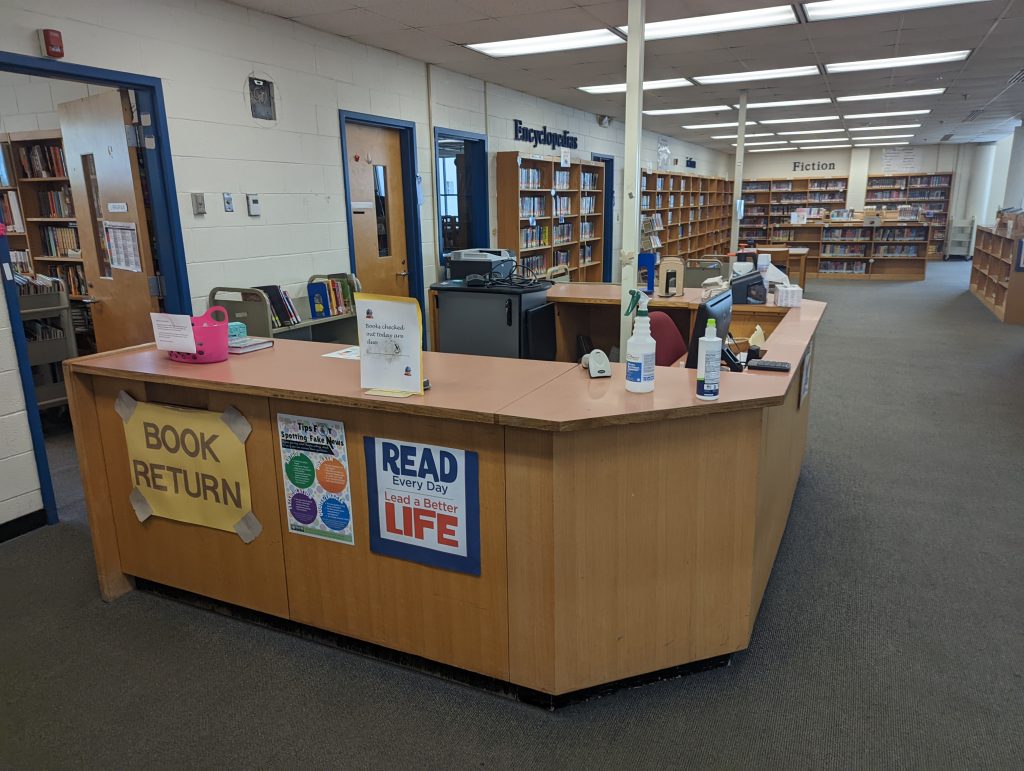
Gildersleeve’s library is staffed by one degree holding librarian and one library assistant who is a paraprofessional or non-degree holder. As the readings discussed, most library services can be separated into user services, technical services, and support services managed by multiple departments (Rubin & Rubin, 2020, pg. 95) but at this library, two people act in every capacity. The librarian is responsible for not only providing instruction but for managing the collection, working with technology issues and developing things like a makerspace, budgeting, auditing and weeding the collection, and supervising one employee. This seems to be common among school libraries, particularly smaller ones where one librarian fills multiple roles.
One of the things I noticed while I was visiting was that the library staff does not man the front desk at all times but rather keeps an eye on things sometimes from the desk and sometimes from the office. They do greet each person that comes in and make themselves known at the desk and in the office just behind it, however. At first I was concerned at the lack of visibility but when I asked, she explained that many of the students feel more comfortable browsing without the teachers hovering over them, particularly at the age most middle schoolers are at. She is able to see the whole library and be reachable from her office and she said it was important that they feel free to look around and make their own book selections. As I watched, she almost instinctively could tell when someone needed help and tell when they were content to just look around. Although you can make the case that it might be better to appear more visible, the few students who did need help knew exactly where to find her if she wasn’t at the desk and no one was left waiting. I thought it was an interesting approach and showed a good understanding of the needs of the customer base.
Digital Access
The library does not have its own independent website but it can be accessed from the main school’s website at http://gildersleeve.nn.k12.va.us/library.html. The webpage dedicated to the library is very bare. It lists the contact information for the two library staff members, provides links to Sora (the school version of OverDrive/Libby) as well as a few databases and the catalog, and that’s it. It’s very easy to navigate, mostly because there isn’t much there. A more inviting website might be preferable but it is definitely user friendly since there is not an overabundance of information. It’s there to be functional and that is all.
One unusual part of their digital access is that unlike many school libraries there are no computers available inside the library for students to use to access the internet or search the catalog. According to the librarian, they used to have them but the technology department was unable to set the computers up to be catalog-only and they had to be removed. Luckily all students are issued Chromebooks so they can use those to search the catalog and access databases from the website. They can also access downloadable books from the library through the Sora platform, which is a school version of OverDrive/Libby, and use those at home. As Rubin and Rubin discussed, the way most library users access information is changing and increasingly shifting towards a digital format (Rubin & Rubin, 2020, pg. 93). Whereas a school library a decade ago would need computers in the facility, the lack of them is a non-issues with every student being issued a Chromebook. Instead the school librarian has adapted the way they teach students to engage with library resources.
Other Thoughts
Entering this library was like stepping back in time to the school libraries I haunted as a kid and that has pros and cons. On the one hand Gildersleeve does a great job based on my observation of connecting with their students and giving them access to materials. They have a lot of ideas such as the makerspace that would likely be a huge success. The problem is a lack of funds as it always is in schools and a lack of staff. The library definitely looks its age, though it does make it feel more comfortable somehow, but the collection is meticulously maintained within the aging facility. There are touches of modernity in the exclusive use of Chromebooks in accessing the digital resources and in the smart boards but much of the signage and the tables and chairs look like they have seen better days. All that to say the library feels welcoming; both of the staff members are friendly and they are engaged with their students. They treat the teens like people, not like little kids. All of the students I saw come through had no problems following the rules and finding books. My overall impression is that a strong staff that can create a strong collection and who really cares about their kids can make a nice space for their students using the tools they have. It doesn’t have to be top of the line to be good.
References
American Library Association. (2019). Core Values of Librarianship. American Library Association. http://www.ala.org/advocacy/intfreedom/corevalues
Rubin, R. E., & Rubin, R. G. (2020). Foundations of library and information science (5th ed.). ALA Neal-Schuman.
